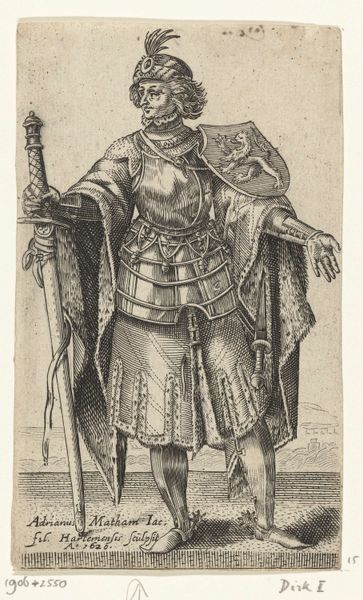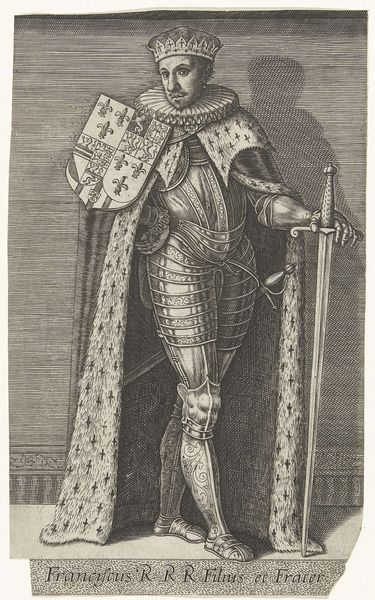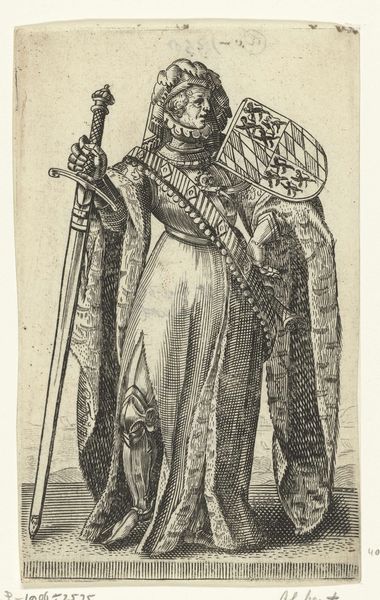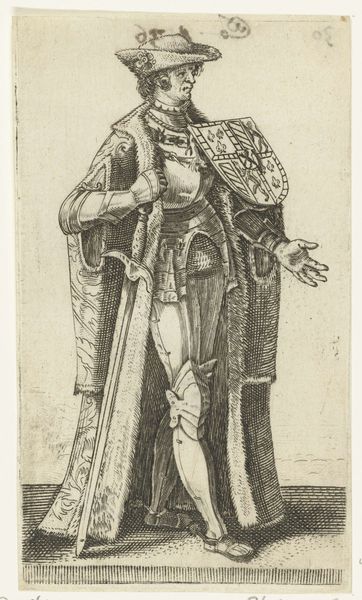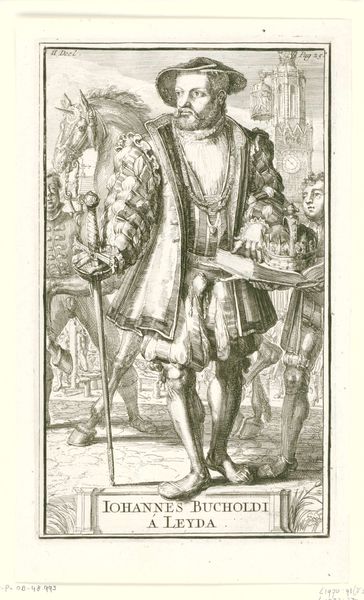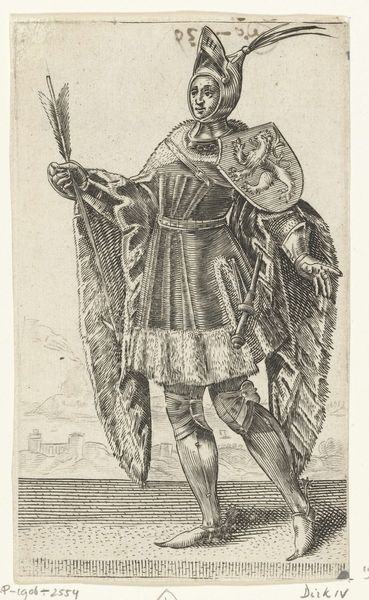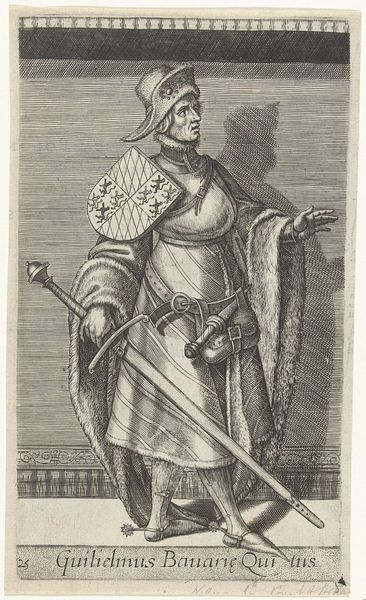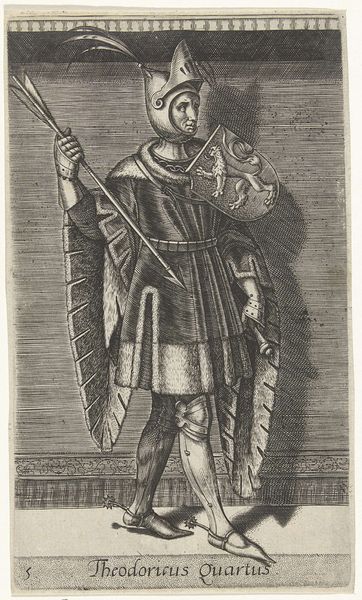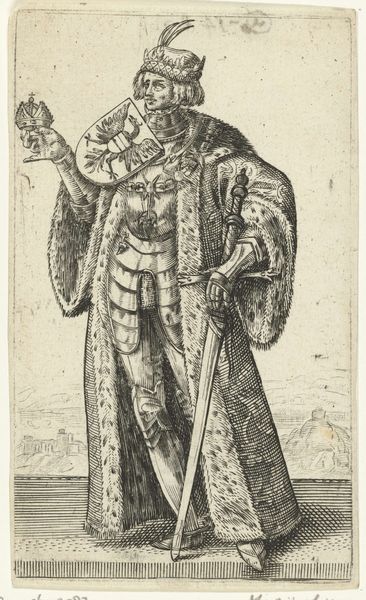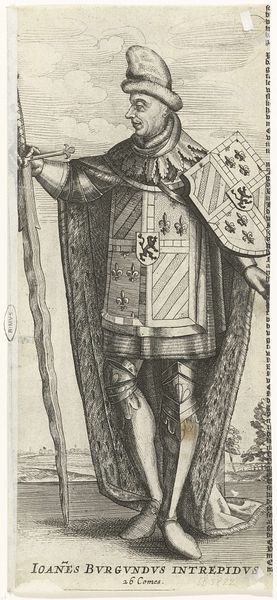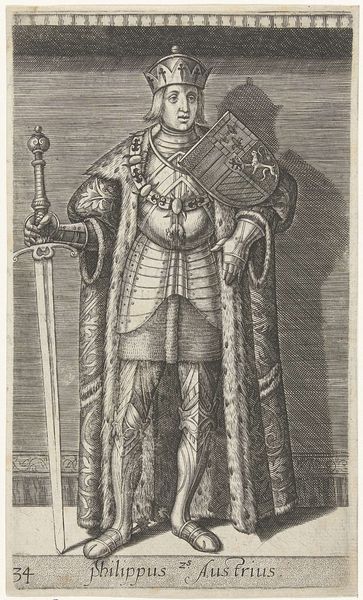
Portret van Karel V van Habsburg, Duits keizer, koning van Spanje 1620
0:00
0:00
adriaenmatham
Rijksmuseum
print, engraving
#
portrait
# print
#
mannerism
#
history-painting
#
engraving
Dimensions: height 130 mm, width 80 mm
Copyright: Rijks Museum: Open Domain
Editor: Here we have a print from 1620 by Adriaen Matham, currently at the Rijksmuseum, titled "Portrait of Charles V of Habsburg, German Emperor, King of Spain". The intricate detail achieved through engraving is captivating. How would you interpret this depiction? Curator: The enduring presence of Charles V, even decades after his death, is remarkable. Notice how he's holding the globus cruciger, an orb signifying dominion over the world. That's a potent image of imperial power. And alongside it, he bears his coat of arms, merging family lineage and geopolitical aspiration into one, consolidated identity. Editor: The symbols are really strong, giving a very defined image. Curator: Absolutely. Now, consider the sword, nearly as tall as he is. What might it suggest beyond military might? Editor: Perhaps a kind of... divinely sanctioned power? An almost mythical element added in. Curator: Precisely. The sword serves as a visual marker tying earthly dominion with perceived moral legitimacy. Remember, during the rise of nation states, monarchs aimed to portray not just political control but a higher, almost providential mandate. It touches our shared cultural memories about who rulers are, or ought to be. Editor: This piece tells so much more than just who the man was. Thank you! Curator: Indeed. It's about the stories we tell ourselves about power, visually codified for generations. The cultural weight lingers.
Comments
No comments
Be the first to comment and join the conversation on the ultimate creative platform.

